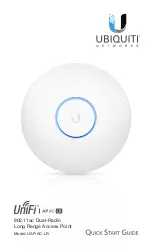
WaveNet Radio Network 3065
Page 6
4.0 Usable radio wavelengths
Under the provisions of the United States Communications Act of 1934, as revised,
authority for managing the use within the United States of the radio frequency
spectrum is partitioned between the NTIA and the Federal Communications
Commission (FCC). Therefore, to establish which radio services will be allowed to
operate in the United States in a given frequency band requires that radio frequency
spectrum management policies by established by both the NIA and the FCC. These
bodies have declared the radio spectrum at 915 MHz ±13 MHz (902MHz to 928MHz)
is designated for industrial, scientific, and medical (ISM) applications. ISM equipment
operating in these bands includes wireless phones, line-of-site radio devices, and
various office communications products.
The WaveNet network operates on a single frequency but that frequency may be
adjusted with in the allowed 26 MHz band at the factory if needed to accommodate
specific interference issues at a site.
5.0 What are the factors to be aware of?
Regardless of the method, radio transmission is subject to a range of outside factors
which can impede it or interfere with it. Equipment characteristics can also influence
the range.
Upon what is the range dependent?
•
Transmission output power
•
Antennas
•
Sensitivity of receiver
•
Environment (air humidity, temperature)
•
Position
of
installation
Technical implementation
Transmission
Encoding
Decoding
Evaluation
Data
Transmitter
Receiver







































